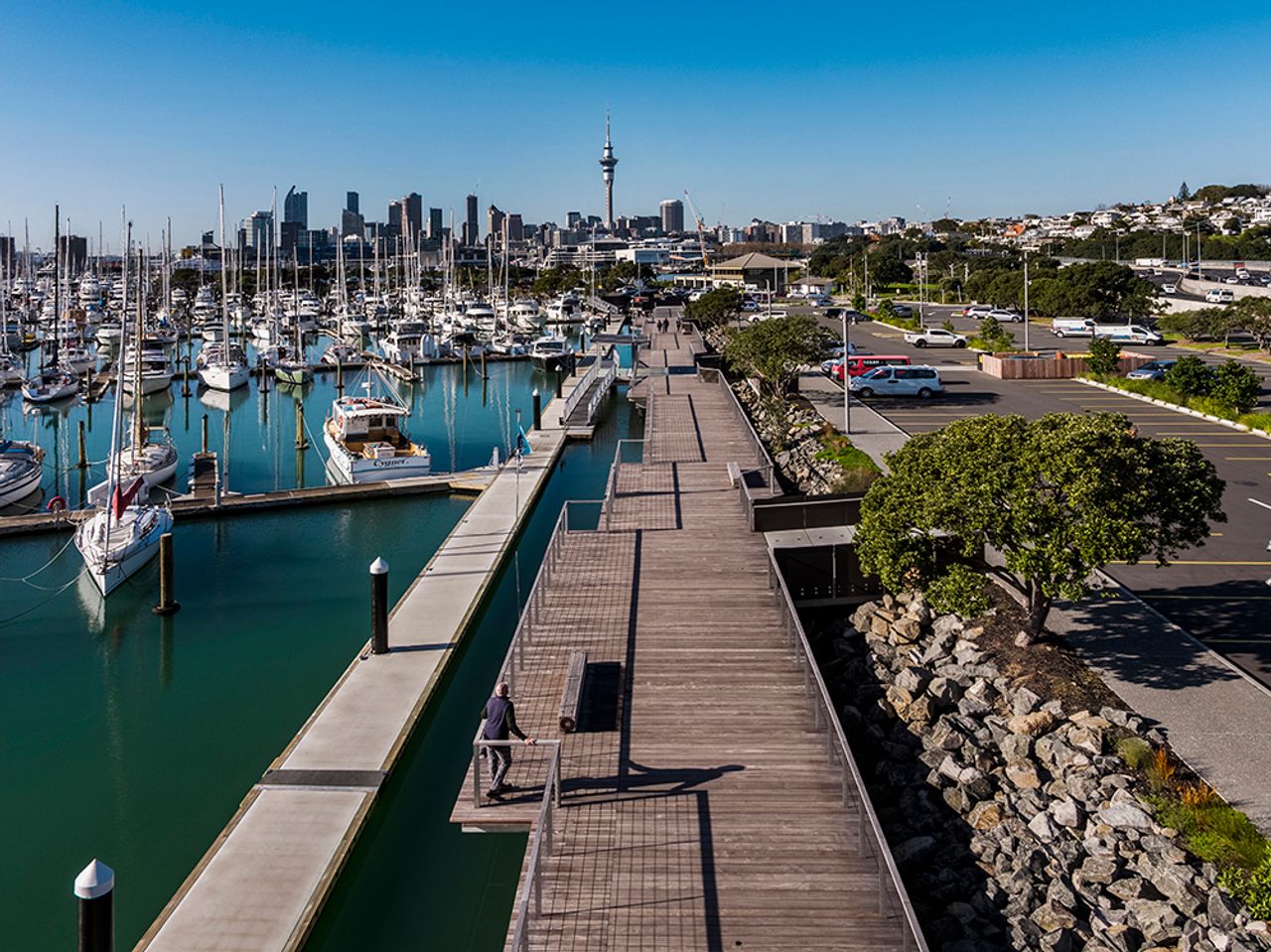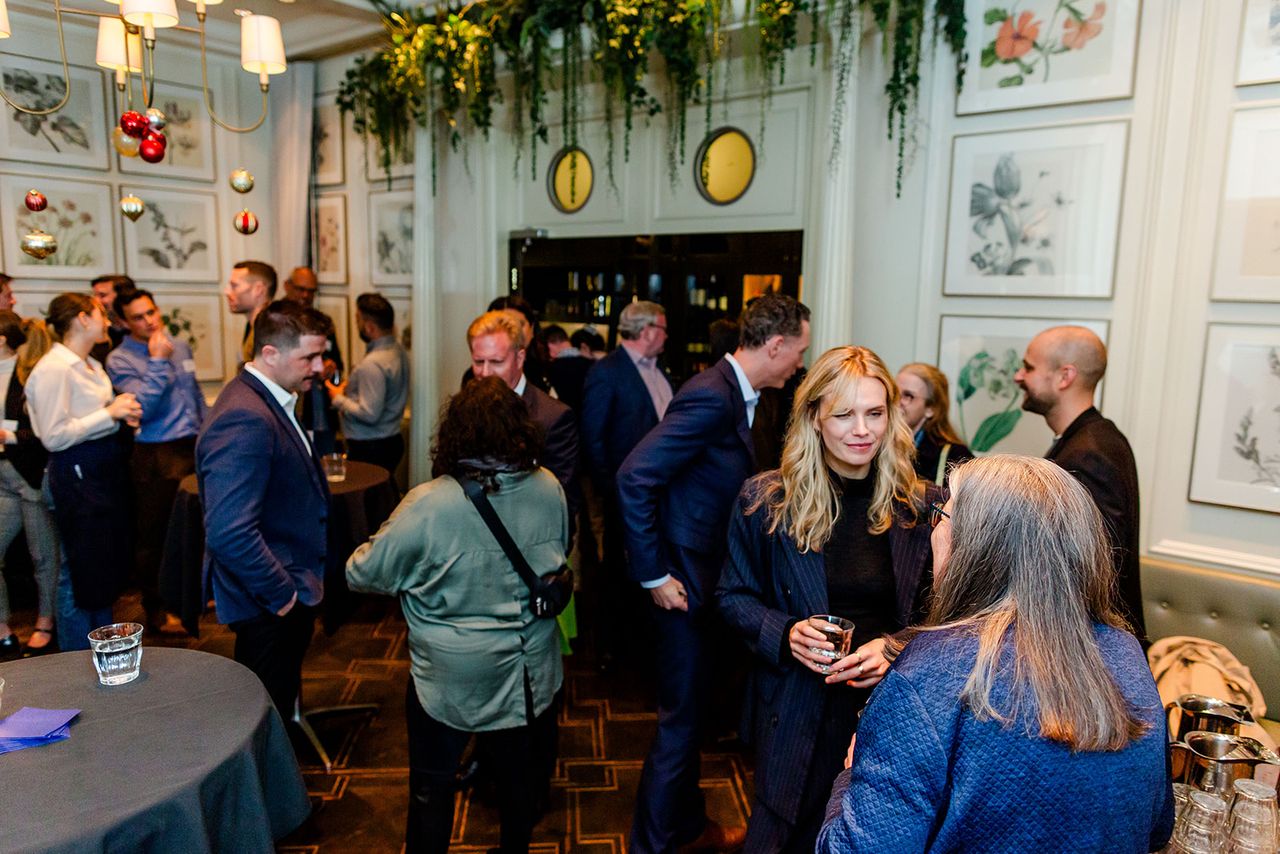News & Insights
Harmonising Global Urban Design Trends in Cities with Unique Landscapes
Author
Date
- 2023 November

Having been lucky enough to travel to the annual Council of Tall Buildings and Urban Habitat conference in Singapore in mid-October with a client team presenting on Commercial Bay, it was interesting to witness first-hand global trends in urban design and how these trends may relate to either New Zealand or Canada.
Today, with 56 per cent of the world’s population living in cities, and the trend continues, there is a need for urban design that recognises the social and ecological responsibility of cities that provide more sustainable forms of urban land use, housing, and transport.
Cities across the globe are facing similar challenges and opportunities in the realm of urban design. Both Canada and New Zealand, despite their unique geographical and cultural context, can draw valuable insights from the prevailing global urban design trends.
Below I delve into the key considerations and explore how both countries can adapt and apply these trends sensibly to their various urban landscapes.
The Scale of Urban Design: Balancing Compactness and Sustainability
Achieving the balance between density and sustainability in a city is essential to creating environmentally friendly and liveable urban environments.
New Zealand's and Canada's urban centres, such as Auckland, Wellington, and Vancouver, may not match the scale of the global metropolises of New York or Tokyo. However, this distinction offers a remarkable opportunity. Smaller cities can be more agile in adopting sustainable practices. Prioritising compact and mixed-use developments can promote walkability, reduce traffic congestion, and foster reliance on efficient public transportation systems.
Key Global Urban Design Trends: Lessons for New Zealand & Canada.
Several global urban design trends are worth noting:
1. Sustainable and Green Urbanism:
Around the world, cities are embracing sustainability through green spaces, energy-efficient buildings, and eco-conscious transportation. The combination of more trees, less energy use and fewer emissions reduces urban temperatures, reduces or mitigates air pollution, and builds natural environmental resilience.
Singapore, one of the most densely populated cities in the world, is leading the way for green spaces, with over 7 million trees (and another 1 million planned) covering almost 50% of its land area with greenery. Singapore also aims to have 85% of its inhabitants living within 400m of a park.
Vancouver, is already a high-performing city with strict building codes and incentives for green construction, leading to a high number of energy-efficient buildings. It also offers programmes to support energy retrofits to encourage owners to make energy-efficient upgrades. Green roofs, which feature native planting, are encouraged to improve insulation, reduce heat gain and lower energy consumption as well as promote biodiversity in the city.
Oslo, Norway, is considered one of the leading sustainable cities with its green transportation, including electric buses, trams, and plentiful charging stations for electric vehicles. Over 60% of Oslo’s energy is provided by renewable sources, primarily hydropower. In addition, there are car-free zones, and the city promotes walking and cycling.
New Zealand and other Canadian cities, can emphasise these principles through sustainable design, adaptive reuse, renewable energy sources, and preservation of its natural beauty.
2. Mixed-Use Developments:
The concept of mixed-use zoning is gaining traction globally. Mixed-use zoning creates dynamic neighbourhoods, blending residential, commercial, and retail spaces. This enables people to walk or cycle to more places, reducing the need for extensive infrastructure and transportation networks. Mixed-use developments also foster a greater sense of community and social interaction.
A popular interpretation of mixed-use zoning is the 15-minute city; an urban planning concept in which most daily necessities and services are within a 15-minute walk or bike ride. Proposed in 2015 by Carlos Moreno, the concept has gained popularity for addressing climate change and improving social connectivity. The Point, a demolished state prison in Utah, is a development transforming 600 acres of land into an eco-friendly city. The mixed-use design of the city is planned so that people will be able to walk more and drive less. It is aiming to be the first genuine 15-minute city in the US. While this is a design starting from scratch, many other cities around the world are endeavouring to rebuild their cities into walkable, bikeable and socially connected cities. Generally, smaller-sized cities are better placed to transform into 15-minute cities than larger ones.
3. Smart Cities:
Smart city initiatives are transforming urban life using technology to enhance infrastructure, services, and sustainability. Smart infrastructure can include smart girds for efficient energy distribution, digital services to offer online platforms to access services such as healthcare, sustainability initiatives for renewable energy, and the use of data analytics to improve decision-making and optimise resource allocation.
Amsterdam is recognised as a leading smart city due to initiatives such as:
Their smart infrastructure, including sensors for monitoring air quality, traffic flow, and energy consumption, allows for real-time data collection and analysis.
Data and technology are used to make informed decisions and enhance the efficiency of the city’s services, such as waste management and urban planning.
The City has invested in digital infrastructure to support current and future digital innovation, including free public Wi-Fi.
Citizens are engaged in decision-making through digital platforms and open data initiatives, so they can help shape the future of the city.
Green initiatives such as energy-efficient street lighting, renewable energy sources and green rooftops help promote sustainability goals.
4. Affordable Housing Solutions:
Housing is a basic human need. However, the World Economic Forum has estimated that by 2025, 1.6 billion people will be affected by the global housing crisis. In a study of 200 cities globally, 90% were found to be unaffordable to live in.
Around the world, a range of housing solutions are being trialled and implemented to address the housing crisis. In India, a new building system that uses low-cost, prefabricated panels from waste material has been approved by the government, and in Africa, a joint venture is 3D-printed houses and schools. In cities including New York, London, Paris and Melbourne, inclusionary zoning, where developers must include a percentage of affordable housing, has made housing more affordable and helped maintain a level of economic diversity in the cities. Latin America’s biggest cities are seeing a boom in the construction of micro-apartments, where the apartment is primarily for sleeping, and leisure time is spent in generous shared communal spaces.
New Zealand, like many regions, grapples with affordable housing challenges. By exploring innovative housing models, such as build-to-rent, adaptive reuse, micro-apartments, and inclusionary zoning, the country can address this pressing issue effectively.
Learning and Application: A Local Approach to Global Ideas
The key to successfully incorporating global urban design trends into both country's urban fabric lies in adaptation. By carefully tailoring these trends to their unique cultural, environmental, and social context, New Zealand and Canada can create cities that resonate with the values and needs of their inhabitants. Community engagement and participation in urban planning are paramount, ensuring that projects align with local aspirations.
Moreover, investing in public transportation, active transportation infrastructure, and green spaces can significantly reduce the country's reliance on cars and promote healthy, vibrant communities. Embracing green building materials and innovative construction techniques, like timber construction, can enhance sustainability while maximising natural light and ventilation in buildings.
In conclusion, both New Zealand and Canada have an exceptional opportunity to merge global urban design trends with their distinct character. By embracing sustainability, mixed-use developments, smart city innovations, and affordable housing solutions, and adapting them to its unique landscape, we can create urban centres that not only stand as models of efficiency and liveability but also remain true to its cultural and environmental heritage.



